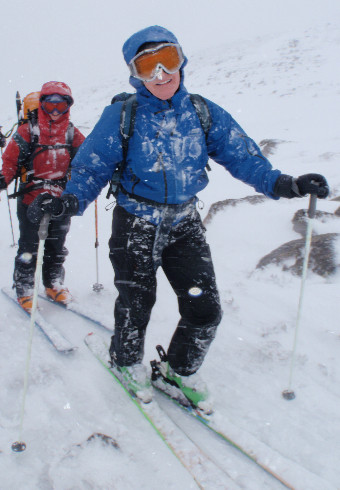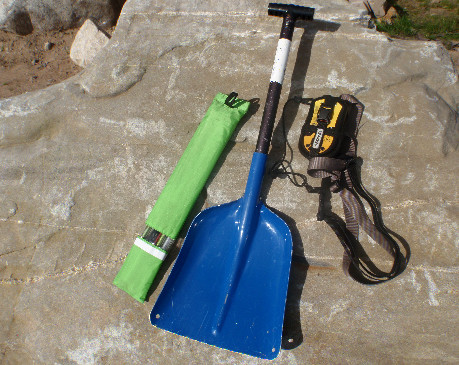Snow sports touring is potentially a high risk sport so always ThinkWINTER!
Before setting off on any trip, you should assess the risk and make educated decisions on your route choice based on that assessment. Travel in the back country of Scotland requires a combination of mountaineering and snow sport skills to ensure safe travel and an enjoyable, rewarding trip.
It is essential you consider the following before and during your trip:
Awareness of the avalanche risk and its effect on your route choice is even more of a priority than when you travel on foot in winter. By the nature of the activity, ski mountaineers/boarders will be looking to head for areas that have good snow cover, unlike mountaineers who may choose a line that is scoured of snow. A key resource is the Scottish Avalanche Information Service (SAIS) forecast.
If you feel you need more advice on avalanche awareness you can sign up for one of our avalanche awareness courses.
The recent weather will affect the snow conditions as well as the day(s) you're out, so keep an eye on it in the days before you go as well as checking in with the forecast the night before and changing your plans if necessary.
You can access a range of mountain weather forecasts here
Find out more about essential navigation skills for safe travel in the back country of Scotland here.
Travel on ski/board presents its own unique navigational challenges, particularly when travelling in descent in white-out conditions where judgement of distance by timing and pacing can be very challenging. It is strongly recommended that traditional map and compass skills are backed up with a GPS and/or altimeter to aid navigation. Particular care should be taken in the vicinity of summits/cornice corrie rims. If you require more advice on navigation skills in relation to snowsport touring, you can sign up for one of our snow sports touring courses.

Photo by Heather Morning

Transceiver, shovel and probes - recommended for back country skiing
It is strongly recommend that ski/boarders travelling in the back country of Scotland each carry a shovel, probe, transceiver, ice axe, crampons and/or ski crampons – and, of course, know how and when to use them. You may also choose to wear a helmet, depending on the steepness of terrain you intend to travel on. See here for more information about helmets.
Each person should also carry essential items in the event of emergency. These include mobile phone, synthetic duvet jacket, bivi bag and group shelter.
It is vital that you plan your adventures according to your level of competence. You and your party should build up your expertise in both navigation and technical ski/board skills in a progressive manner. Remember the ski/board lines will always return, the trick is making sure that you are around to enjoy them.
The best way to learn is on the hill, with either a more knowledgeable friend or a professional instructor, but this series of videos from Glenmore Lodge gives a taste of some of the skills which will be useful in ski mountaineering.
3. Kick turns
5. Downhill skiing with skins on, snow plough style
6. Downhill skiing with skins on
8. Stem turns
9. Navigating in poor visibility
10. Jump turns